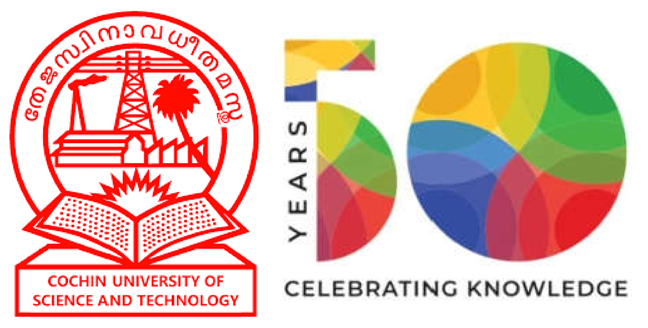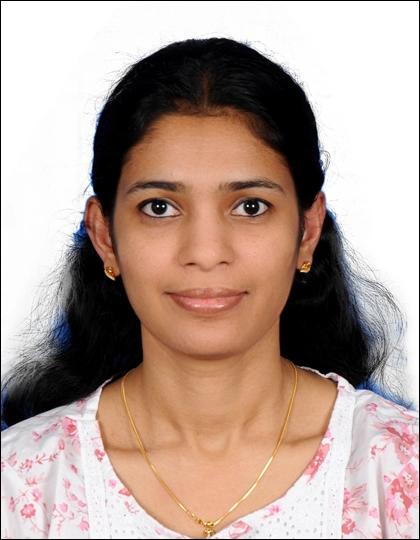- James, G., Das, B. C., Jose, S., & VJ, R. K. 2021. Bacillus as an aquaculture friendly microbe. Aquaculture International, 1-31 view
- Chandhini, S., Trumboo, B., Jose, S., Varghese, T., Rajesh, M., & Kumar, V. R. 2021 Insulin-like growth factor signalling and its significance as a biomarker in fish and shellfish research. Fish Physiology and Biochemistry, 1-21, view
- Jose, D., Manjusha, K., Jose, S., Mohandas, A., Bright Singh, I.S., 2017. Purification and characterization of highly active LasB protease from Pseudomonas aeruginosa MCCB 123. Indian J. Exp. Biol. 55, 303–310.view
- Sukumaran, V., Jose, S., Chekidhenkuzhiyil, J., Lalithabai, M.D., Nair, S.B., Christo, D., Kizhakedath, V.K., Paran, B.C., Philip, R., Sarojini, B.S.I., 2017. ELISA detection of vitellogenin in the haemolymph of Penaeus monodon (Fabricius, 1798) (Caridea: Penaeidae): indirect indicator of female maturity. J. Crustac. Biol. 37, 473–480. https://doi.org/10.1093/jcbiol/rux040 view
- Vrinda S, Reshmi C, Jose S, Reynold P, Vijayan KK, Philip R, Singh IS. 2017 Crustacean hyperglycemic hormone family gene silencing in Penaeus monodon mediated through dsRNA synthesized in vitro from genomic and cDNA. Indian Journal of Biotechnology 16(1): 37-43, view
- Vrinda, S., Jasmin, C., Sivakumar, K.C., Jose, S., Jose, B., Philip, R., Bright Singh, I.S., 2017. Regulating gonad inhibition and vitellogenin/vitellin induction in Penaeus monodon using mature GIH fusion protein and polyclonal antisera. Comp. Biochem. Physiol. Part A Mol. Integr. Physiol. 203, 167–178. https://doi.org/10.1016/j.cbpa.2016.09.007 view
- Puthumana J, Jose S, Philip R, Singh IB. 2015 Cellular and molecular markers in monitoring the fate of lymphoid cell culture from Penaeus monodon Fabricius (1798). Fish & shellfish immunology. 1;47(2):893-901, view
- Jayesh, P., Jose, S., Philip, R., Bright Singh, I.S., 2013. A novel medium for the development of in vitro cell culture system from Penaeus monodon. Cytotechnology 65, 307–322. https://doi.org/10.1007/s10616-012-9491-9 view
- Jayesh, P., Seena, J., Bright Singh, I.S., 2012. Establishment of Shrimp Cell Lines: Perception and Orientation. Indian J. Virol. 23, 244–251. https://doi.org/10.1007/s13337-012-0089-9 view
- Jose, S., Jayesh, P., Sudheer, N.S., Poulose, G., Mohandas, A., Philip, R., Bright Singh, I.S., 2012. Lymphoid organ cell culture system from Penaeus monodon (Fabricius) as a platform for white spot syndrome virus and shrimp immune-related gene expression. J. Fish Dis. 35, 321–334. https://doi.org/10.1111/j.1365-2761.2012.01348.x view
- Jose, S., Jayesh, P., Mohandas, A., Philip, R., Bright Singh, I.S., 2011. Application of primary haemocyte culture of Penaeus monodon in the assessment of cytotoxicity and genotoxicity of heavy metals and pesticides. Mar. Environ. Res. 71, 169–177. https://doi.org/10.1016/j.marenvres.2010.12.008 view
- Jose, S., Mohandas, A., Philip, R., Bright Singh, I.S., 2010. Primary hemocyte culture of Penaeus monodon as an in vitro model for white spot syndrome virus titration, viral and immune related gene expression and cytotoxicity assays. J. Invertebr. Pathol. 105, 312–321. https://doi.org/10.1016/j.jip.2010.08.006 view
- Preetha, R., Jose, S., Prathapan, S., Vijayan, K.K., Jayaprakash, N.S., Philip, R., Bright Singh, I.S., 2009. An inhibitory compound produced by Pseudomonas with effectiveness on Vibrio harveyi. Aquac. Res. 41, 1452–1461. https://doi.org/10.1111/j.1365-2109.2009.02436.x view
Dr. Seena Jose
Chief Minister’s NavaKerala Post Doctoral Fellow
Protection of shrimp from white spot virus: Development of a marine invertebrate permanent cell line susceptible to the virus through reprogramming shrimp lymphoid cells
White Spot Virus infection is a deadly disease affecting shrimp and the absence of a shrimp cell line impedes the extensive study of the virus and the development of effective therapeutic measures. The study aims to develop a Penaeus monodon cell line by simultaneous modulation of inhibitors and enhancers, which will be achieved by a) inhibition of p53 gene expression b) ectopic expression of transcription factors (OSKM factors) c) application of small molecules.
Honours and Awards
- Chief Minister’s NavaKerala Postdoctoral Fellowship, Kerala State Higher Education Council (2022)
- University Postdoctoral Fellowship, Cochin University of Science and Technology (2019-2022)
- ICAR NET in Environmental sciences, 2018
- Research Associateship, Kuwait Institute for Scientific Research, Kuwait (2013-2019)
- GATE (Graduate Aptitude Test in Engineering) in Life Sciences, 2003
- Third rank in M. Sc. Degree (Environmental Technology) examination held by Cochin University of Science and Technology, India, 2002
- Second rank in B. Sc. Degree (Botany) examination held by Mahatma Gandhi University, Kerala, India, 1999
- Archbishop Mar Mathew Kavukattu Memorial Scholarship in Botany, Assumption College, Kerala, India, 1998-99
Mentor
Prof. Valsamma JosephArea of Specialization
- Animal cell culture
- Bioprospecting
- Marine Biotechnology
- Microbiology
- Aquatic animal health
Publications
- Jose S, Jayesh, P., Rosamma Philip, A. Mohandas and I.S. Bright Singh. 2007. Shrimp cell culture: A review.In: Bright Singh, I.S., Joseph V., Philip, R., Mohandas, A. (Eds). Aquaculture and Marine Biotechnology.National Centre for Aquatic Animal Health, CUSAT, India, p. 79-93. ISBN 81-900724-2-0



